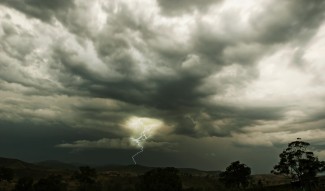All lenders must account for the fact that—despite careful lending practices—their loan recipients may make payments late or stop making payments altogether. Loan loss reserves (LLR) exist to safeguard the lender’s other assets against these losses and serve as a rainy-day fund. Lenders typically set aside their own capital to fund their LLRs as a precautionary measure. LLRs can also be set up by a third party to offset risk on behalf of another lender—taking on all or part of the potential loss should nonpayment occur. This method is common in clean energy finance, where an entity will agree to absorb a predetermined amount of losses for a financing partner, thereby mitigating some of the lending risk. This third party is often a state or local government seeking to advance specific energy priorities or catalyze private investment in clean energy and energy efficiency projects.
How Is a Third-Party Loan Loss Reserve Structured?
When a state sets up an LLR on behalf of a financing partner, the portfolio size is determined by available funding and the financial partner’s risk appetite. If the state has a specific amount of money to allocate to an LLR, it can work with a prospective financial partner to determine the size of the loan portfolio—based on risk and institutional goals—that the LLR can support. This relationship is typically expressed in percentage form (calculated by dividing the dollar amount in the LLR by the dollar amount in the loan portfolio) or as a leverage ratio ($x in portfolio : $1 in LLR).
For example, a $5 million LLR created to support a $100 million portfolio would be a 5% LLR with a 20:1 leverage ratio. The higher the leverage, the larger the overall portfolio can be and the more loans that can be made—but higher leverage also decreases the available risk protection. A lower leverage implies more risk protection, but constricts total lending. These numbers are not permanent, however; the two groups can agree to change the leverage at any point. For example, Michigan Saves, a nonprofit organization that finances energy improvements, increased the leverage on one of its LLRs after a few years of low-default lending increased its financing partners’ willingness to make loans with less risk coverage.
Another consideration is the percentage of each individual loan that the LLR will cover. Typically, LLRs do not cover 100% of losses from each loan, so the lender has some of its own funds at risk, ensuring prudent lending practices. Coverage ratios of 80–100% are typical (DOE 2016).
During the negotiation period with financial partners, states can stipulate lending terms. The state and the private financial partner should work together to determine the portfolio’s goals, including permitted use of the loan by the borrower, interest rates, loan terms, and/or target markets (e.g., residential, commercial, and/or multifamily). These conversations will help inform the leverage ratio and the percentage of each loan covered.
Benefits of Loan Loss Reserves
Benefits to Lenders
LLRs can open new markets, products, and customers for lenders. Typically, LLRs are set up as mission-driven lending to support investment in underserved markets. By having the risk partially offset, lenders are encouraged to reach such these underserved markets. Lenders can also expand into new customer bases or appeal to a broader applicant pool by reducing the minimum required credit score, increasing or eliminating the loan-to-value ratio, or increasing the debt-to-income ratio.
Benefits to Customers
Customers may get better financing terms. LLRs serve as a credit enhancement, and terms can be constructed to offer below-market-rate terms to increase participation.
Benefits to State Governments
If a state or local government has energy efficiency or clean energy goals that exceed its funding capacity, LLRs can offer a way to incentivize private investment in clean energy lending. In this way, LLRs can be considered public-private partnerships that leverage a smaller amount of public funding to increase private sector engagement.
An LLR is also recyclable: If no late payments occur and no loans go into default, an LLR may never be drawn upon. As borrows pay back their loans, the same LLR—with no new funding—can be used as a credit enhancement for additional loans. The funds are thus considered recycled as they absorb the risk of multiple loans across the portfolio’s lifetime.
Examples of LLRs
Connecticut
Connecticut Green Bank (CTGB) created an LLR for its Smart-E Loan product (a low-interest loan for residential energy efficiency retrofits). This reserve is available for local lenders, who agree to offer better terms (such as longer terms and interest rates that do not to exceed a certain amount). The CTGB LLR acts a second-loss reserve, where the bank takes first losses and the CTGB will absorb losses after a predetermined threshold (Coalition for Green Capital). This model prevents catastrophic losses to the first lender (World Bank 2016).
Michigan
Using repurposed funds from the American Reinvestment and Recovery Act and the Michigan Public Service Commission, along with additional funding from the Department of Energy’s State Energy Program, Michigan Saves started and administers multiple LLRs (ACEEE 2016). It has used those funds to create residential, commercial, and multifamily programs, loaning out only private funds and using a distinct LLR for each program as credit enhancement. Michigan Saves keeps the LLR on its own balance sheet.
California
California Alternative Energy and Advanced Transportation Financing Authority (CAEATFA) created a loss reserve for its state’s residential PACE program. The LLR was created to compensate first mortgage holders if losses were incurred in a foreclosure resulting from a PACE lien. To be included in the reserve, PACE providers had to conform to certain CAEATFA standards. To date, the reserve covers more than $1.2 billion in PACE financing and has not yet had any claims against it (CAEATFA 2016).


